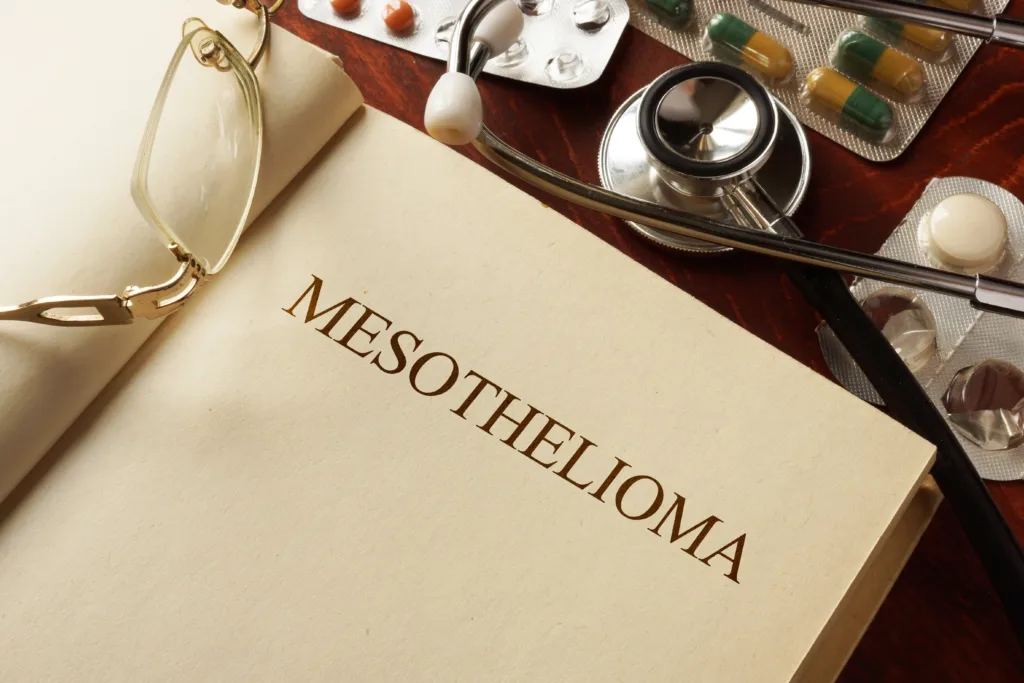What is Talc?
Talc, known for being the softest mineral, is a familiar to most consumers. Talc has most famously been used as a primary ingredient in baby powder for decades. Countless other personal care products also use the mineral. Because talc is soft and highly absorbent, it is used in many products like eyeshadow, body powder, and more. This soft, white powder helps prevent friction on the skin, making it ideal for body powders.
Unfortunately, some talc samples are contaminated with asbestos. These dangerous fibers are known for causing mesothelioma. Asbestos-contaminated talc has been linked to mesothelioma, raising new concerns regarding the safety of talc products. This potential source of asbestos exposure has yet to be widely known. However, it is equally dangerous to the other sources of exposure. Some of the most common sources are insulation and other industrial materials.
Talc Exposure and Mesothelioma
Talc and asbestos commonly occur in the same natural environments. This means that many mining sites access both minerals, a situation which can create a dangerous environment. Talc and asbestos are both fine and friable, which means that the two minerals can be turned into dust easily. As a result, both minerals have the potential to mingle at mining sites. If the two mingle, samples will become contaminated.
Asbestos is the only known cause of mesothelioma. Exposure to talc that contains asbestos can put consumers at risk of inhaling asbestos fibers. This increases their risk of contracting mesothelioma later in life since the illness can take decades to develop. Symptoms may take up to 50 years to become visible. Most consumers are familiar with the risks of asbestos exposure. Exposure often affects those in industrial professions such as construction, pipe-fitting, and plumbing. Asbestos fibers are often found in materials such as insulation, brake pads, and other materials. This results in a higher risk of exposure in the workplace. However, the risks of asbestos in talc are less well-known.
Where is Talc Found?
Most consumers are more familiar with cosmetic talc than they are with industrial talc. However, both types of talc can contain asbestos. While asbestos exposure is most common at industrial job sites, exposure affects anyone who inhales the fibers. This includes individuals who are exposed at work as well as those who may be exposed in their homes. At-home exposure is common through the use of cosmetics or other personal care items containing talc. Talc’s highly absorbent and mattifying qualities make it ideal for eliminating friction. This gives talc a strong role in both cosmetic and industrial products. Most notably makeup products that are applied to the face contain talc.
Cosmetic talc is found in many household products, especially personal care items. Items like makeup and other body products may contain talc. These products are commonplace in most households. Talc products include items such as blush, eyeshadow, deodorant, dry shampoo, and more. Many women use multiple cosmetic products each day use talc as a main ingredient.
Industrial talc has been used in many products, including ceramic glazes, clays, plastics, and adhesives. Other products containing talc include some roofing and flooring materials and paints. For this reason, many who work as roofers, ceramicists, and other industrial occupations may come into contact with talc products during their work. See the list below for talc products.
Talc in the News
Recently, talc has been making headlines. Several companies face legislation regarding the alleged links between talc products and increased risk of cancer. Most notably, Johnson & Johnson faced a $4 billion verdict in a case that alleged a connection between their products and cancer in women. As more cases emerge, the allegations become harder to dismiss.
Vogelzang Law proudly represents clients who have developed mesothelioma as a result of their use of asbestos-contaminated talc products. Our team remains dedicated to representing individuals who have been harmed by asbestos exposure. We are fully committed to raising awareness about asbestos-contaminated talc.
Products linked to talc:
- Talc-based body powders
- Talc-based baby powders
- Talc sprays
- Some cosmetics
- Industrial talc (ceramics, plastics, paper, roofing, flooring, rubber, crayons, animal feeds, paints, and adhesives)
- Medications (tablets)
Brands in litigation:
Several brands are facing litigation following allegations of contaminated talc. Some of these brands include the following:
- Bauer & Black Baby Talc
- Cashmere Bouquet Body Talc
- Coty Airspun Face Powder
- Desert Flower Dusting Powder
- English Leather After Shave Talc
- Faberge Brut Talc
- Friendship Garden Talcum Powder
- Kings Men After Shave Talc
- Old Spice After Shave Talc
- Pinaud Clubman Talc Powder
- Rosemary Talc
- ZBT Baby Powder
Who’s at Risk?
Any exposure level to asbestos through talc products can be dangerous. Workplace exposure is the most common type, but people can also be exposed to asbestos-contaminated talc products in their homes. Typically, bricklayers, plumbers, pipefitters, insulators, and steelworkers are considered to be at the highest risk of asbestos exposure. However, asbestos-contaminated talc can be found in a variety of materials used elsewhere.
Industrial talc is found in many ceramic glazes and clays. This puts ceramicists and potters at a potential risk for asbestos exposure. The material is also used in several plastics, roofing and flooring products, paints, adhesives, and more.
Personal care products such as eyeshadow, blush, deodorant, and body powder can pose a potential risk of at-home exposure. Even workers who do not handle talc products at their job may face exposure risks in their homes. At-home exposure can cause asbestos disease similar to workplace exposure.
Take-home or second-hand exposure occurs when asbestos dust is tracked into the home on clothes or shoes. This usually happens when a person who works with asbestos products unknowingly brings dust home. This type of exposure can affect the loved ones of industrial workers. Vogelzang Law has previously represented families affected by take-home asbestos exposure. The firm is proud to be a resource for families affected by talc exposure at work and in their homes.
Seeking Help After Talc Asbestos Exposure
Vogelzang Law is proud to serve as a resource for individuals facing a mesothelioma diagnosis following exposure to asbestos in talc. The firm is completely dedicated to families who have been harmed by asbestos exposure. Vogelzang Law is proud to offer help to those impacted by asbestos-contaminated talc.
Our team has the knowledge and experience necessary to successfully represent those diagnosed with mesothelioma following talc exposure. By working closely with clients, our team is capable of determining when and where clients were exposed to asbestos-contaminated talc prior to their diagnosis.



